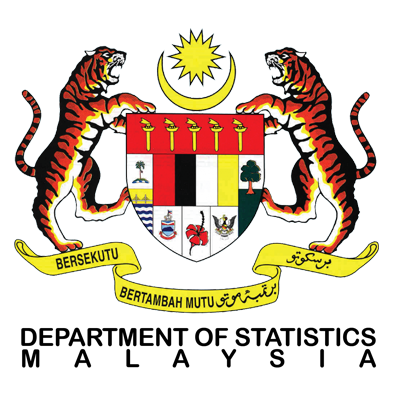
- ← back
- DOSM Profile
- Background, Role & Function
- Objectives, Vision, Mission & Motto
- Organisation Chart
- Division Functions
- Core Values
- Songs
- Logo
- Leaders
- Chief Digital Officer (CDO)
- Policy & Client's Charter
- Strategic Plan
- Annual Report
- Act & Regulation
- The Strengthening of The National Statistical System (SNSS)
- Awards & Recognition
- Contact Us
- Directory
- Procument
- Advertisement
- Result
- ← back
- Advance Release Calendar
- Publications
- Open Data
- Economy
- Agriculture
- Construction
- Economics Indicator
- External Sector
- Manufacturing
- Mining & Quarrying
- National Accounts
- Others
- Prices
- Services
- Social
- Environment
- Household Income & Expenditure
- Social Indicators
- Population & Demography
- Labour Market
- Small Area Statistics
- Ad hoc
- Agriculture Census
- System of Environmental-Economic Accounting (SEEA)
- Sustainable Development Goals (SDG)
- COVID-19 Malaysia
- Pocket Stats
- National Summary Data Page (NSDP)
- Explore Release By Alphabet
- Glossary A-Z
©Copyright Department Of Statistics Malaysia (DOSM) All Rights Reserved

-
Department of Statistics Malaysia,
Block C6 & C7, Complex C,
Federal Government Administrative Centre
62514 Precinct 1,
Wilayah Persekutuan Putrajaya - 03 8885 7000
- 03 8888 9248
-
info@dosm.gov.my (General Enquiries)
data@dosm.gov.my (Data Request & Enquiries)
internationalunit@dosm.gov.my (International Relations Enquiries) - www.dosm.gov.my
DOSM's Agencies
- Institute for Labour Market Information and Analysis
- Malaysian Bureau of Labour Statistics
- Malaysia Statistical Training Institute
DOSM's Community
Other Agencies
International Statistical Organisation & Office
Visitor 5,275,045
Last update : 30 November 2025
Last update : 30 November 2025
W3C Selection
Text Color
A A A AText Size
A+ A A-







